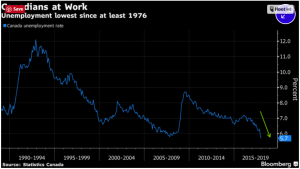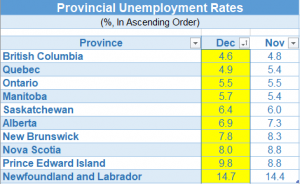The Taste of Home – Our House Magazine
 Restaurateur and TV personality Vikram Vij on the joy of cooking—slowly—at home
Restaurateur and TV personality Vikram Vij on the joy of cooking—slowly—at home
The culinary landscape in North America is amply populated with chefs and personalities putting their spin on a style of cooking designed to get your attention. With the explosion of the foodie culture in recent years, cutting through the clutter would seem a near impossible task. But that’s exactly what a chef with humble beginnings from India has managed to do. Vikram Vij is one of Canada’s most celebrated chefs, ascending the culinary ladder by reaching into his Indian heritage. He opened Vij’s restaurant in Vancouver in 1994 to great acclaim and hasn’t looked back. He’s since opened three Indian restaurants and a fleet of food trucks and become an author and television personality, most notably taking a turn as a Dragon on CBC’s Dragons’ Den. Despite all the success and attention, Vij continues to focus on what he loves to do: cook. During an autumn tour of India, he took time out to speak to Our House magazine about food, fame and his future.
Our House: Where do you call home these days?
Vij: I live in Surrey, B.C., but as an Indian who came to Canada and who loves to travel and get culinary inspiration from around the world, I like to think I’m a global citizen!
I understand you’re in India, can you tell me a little about the purpose of the trip?
Every year I take a trip with some food fans, some of whom have been coming with me for years now, for a Vij’s Culinary Tour. We’ve visited India most often, but we’ve also been to places like Vietnam, Peru and South Africa. I love to experience not only different culinary cultures, but also to re-explore my own roots and to visit different parts of India to see what is being cooked – and how it’s being cooked – and to incorporate those methods into the food in my restaurants. That’s how I stay authentic, and it’s the best way to keep learning and to grow.
Describe how important cooking at home is, not just for yourself but for families and people in general?
I cannot say enough about eating together as a family, and having a home-cooked meal – and I’m a restaurateur! There are stats that show families who make time to eat together each night, who break bread together and talk, have fewer instances of crime, of drug addiction, and of broken homes. Now, that’s easy for me to say – working in the restaurant industry, we were hardly a “sit down for dinner at six o’clock” family. But we made a conscious effort to set aside breakfast time, and an evening each week when we knew we would all be together – and that means no cellphones at the table.
What advice would you give to someone who is afraid of or overwhelmed by the idea of learning how to cook?
I would say just try it. There are so many books out there that will teach you the basics, and if you get it wrong, so what? I don’t use recipes; I put in a few key ingredients that I want to use… then I add more, and then even more until I’m happy with what I’ve cooked. Baking is a science – so it’s hard to go freestyle with that… but cooking is love… and you should experiment and not be put off from trying.
What advice would you give to a young chef thinking about opening his or her own restaurant?
I would say it will be the hardest thing you will ever do. But it will also be the most rewarding. You need three things: the passion to follow your dream of opening a restaurant, an amazing team who will always have your back, and money – ideally lots of it!
Do you cook much at home, or leave it to your restaurants?
I love to cook at home and I love to be in my restaurants seeing other people enjoying their dinner with us. I don’t have my daughters at home to cook for anymore, so I can make what I want. But I like to take my time while I’m cooking. Being in the kitchen is my greatest pleasure, and it’s also my entertainment for the evening, and I don’t want to rush it.
You’ve cooked for celebrities and politicians. Is there someone or a group you haven’t cooked for that you would still like to?
There’s an expression: “Give a man a fish and you feed him for a day. Teach a man to fish and you feed him for a lifetime.” I’d like to teach people how to cook Indian food, and have it added to their repertoire of meals they cook for their family. I’d love to be an ambassador of Indian food in Canada, and I’d like to show as many Canadians as possible to not be daunted by Indian spices and recipes.
Describe your thoughts on the Canadian culinary scene. How do Canadians stack up against the rest of the world?
Canadian cuisine is incredible – and it’s getting better and better. We have the most amazing resources which create the best ingredients. We have fantastic meats and produce from our local farms, we’ve got really great wines, craft beers, gin and vodka, and on the east and west coasts, the seafood is second to none. When you’ve got those world-class resources, then you’re already on the international stage from a culinary perspective.
How does your typical day unfold?
There’s honestly no such thing as a typical day. They are all so different, and it depends on where I am. As much as possible, I get up early and go to yoga, then it’s either meetings and more meetings followed by service at one of the restaurants or, if I’m travelling, I’ll try and eat at someone else’s restaurant to see what they’re up to.
What do you make of the popularity of food shows and channels like the Food Network, and chefs as celebrities?
I think bringing cooking into the mainstream cannot be a bad thing, but I hate the term “celebrity chef,” because our main focus should always be the food, rather than fame. I’ve been involved in many TV shows myself and I’m grateful for the ability to bring an Indian presence there, and to highlight Indian cuisine to a wider audience.
You’ve written books, been on TV shows. Do you see yourself cooking and opening and running more restaurants for the years to come? What does the future hold?
The day I stop cooking is the day I give up on everything! Sure, I’d like to open more restaurants, but I also want to make sure the ones I have are the best they can possibly be and have the attention they deserve. I have two daughters, but I have three other children: Vij’s, Rangoli and My Shanti!
What is the one thing people might not know about you?
I’m known for working the room at my restaurants – but the reason I love to do that is because I originally wanted to be a Bollywood actor. I love to perform and to talk to people and I wanted to be a movie star, but my father said no son of his was going to be an actor, so I became a chef.












